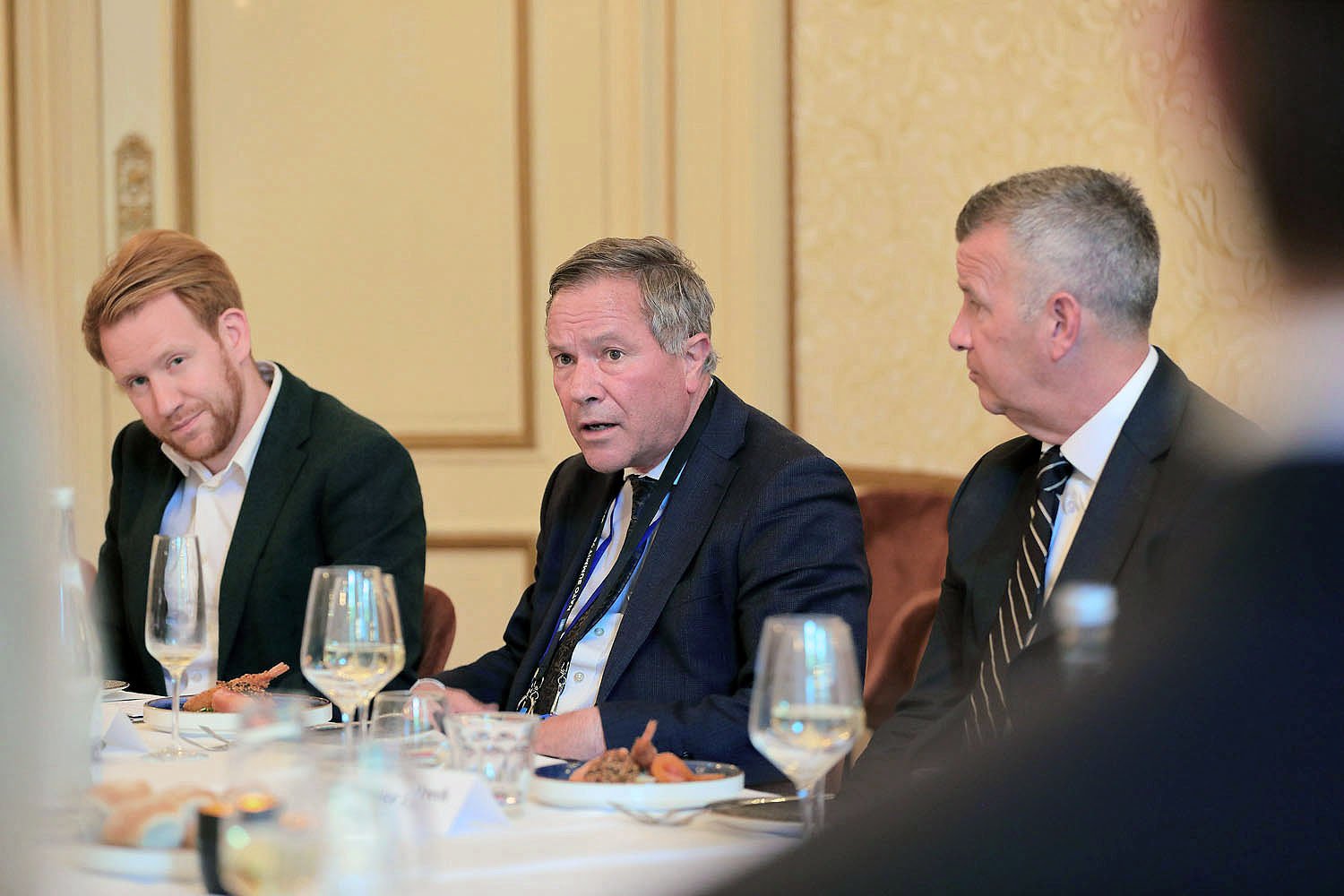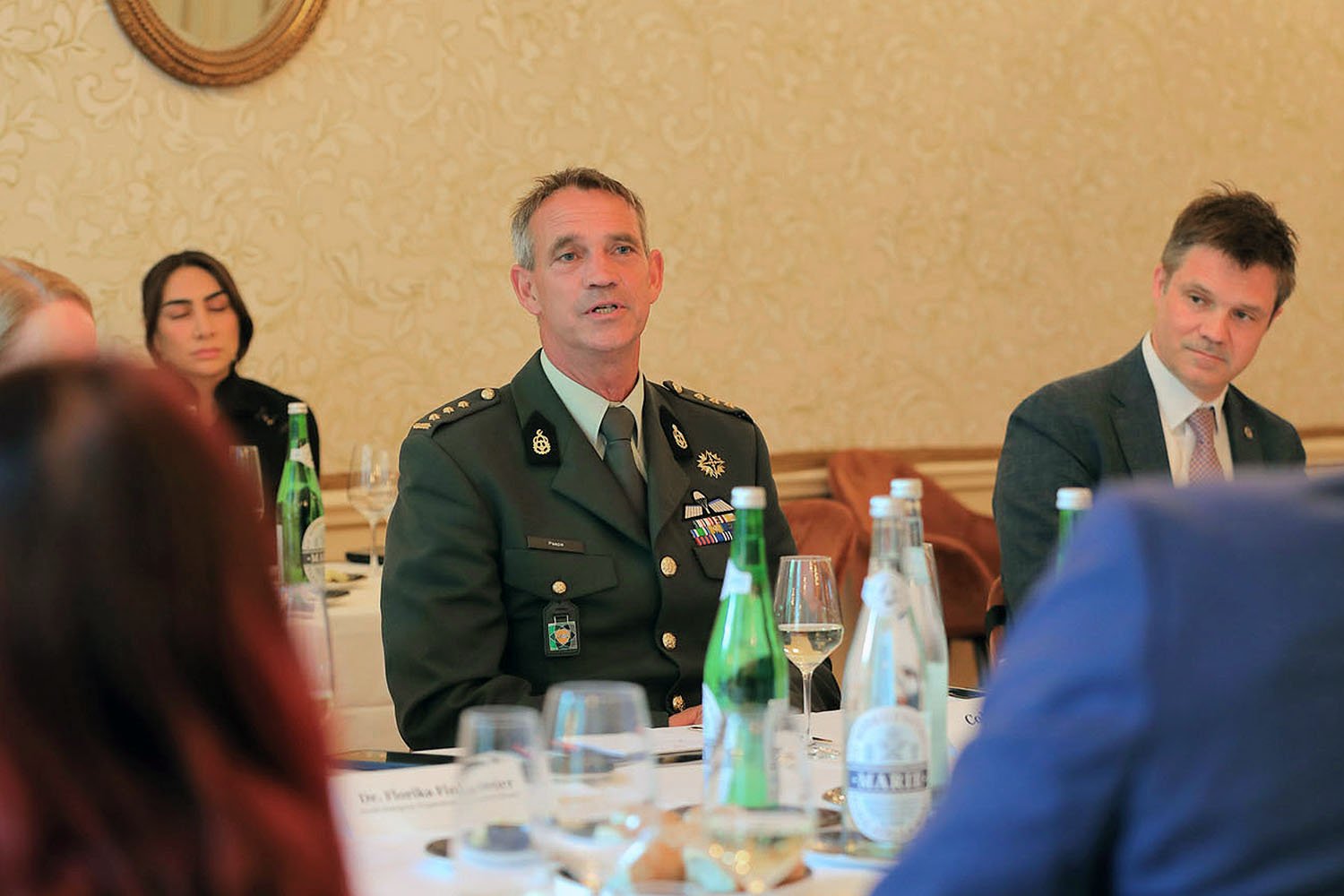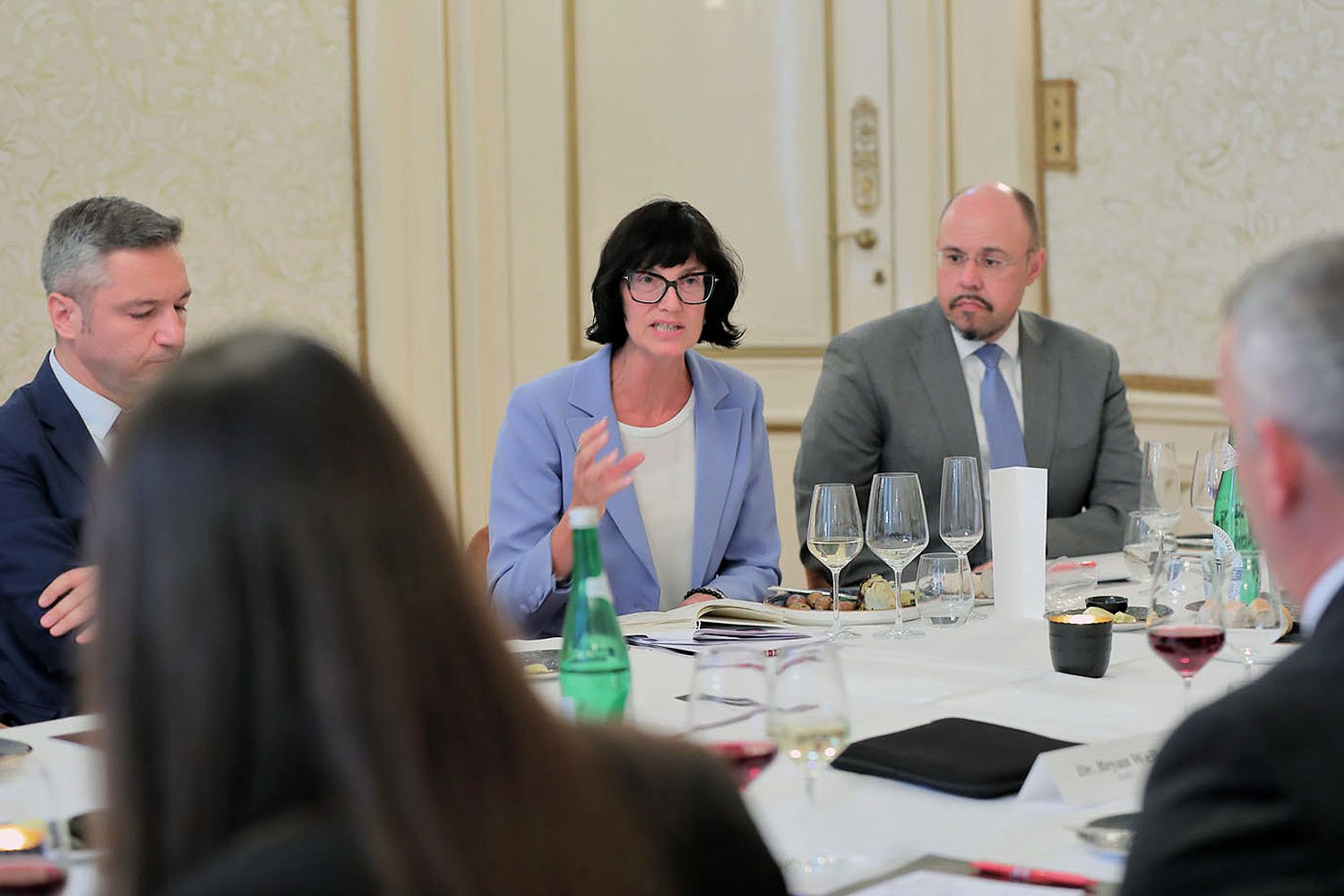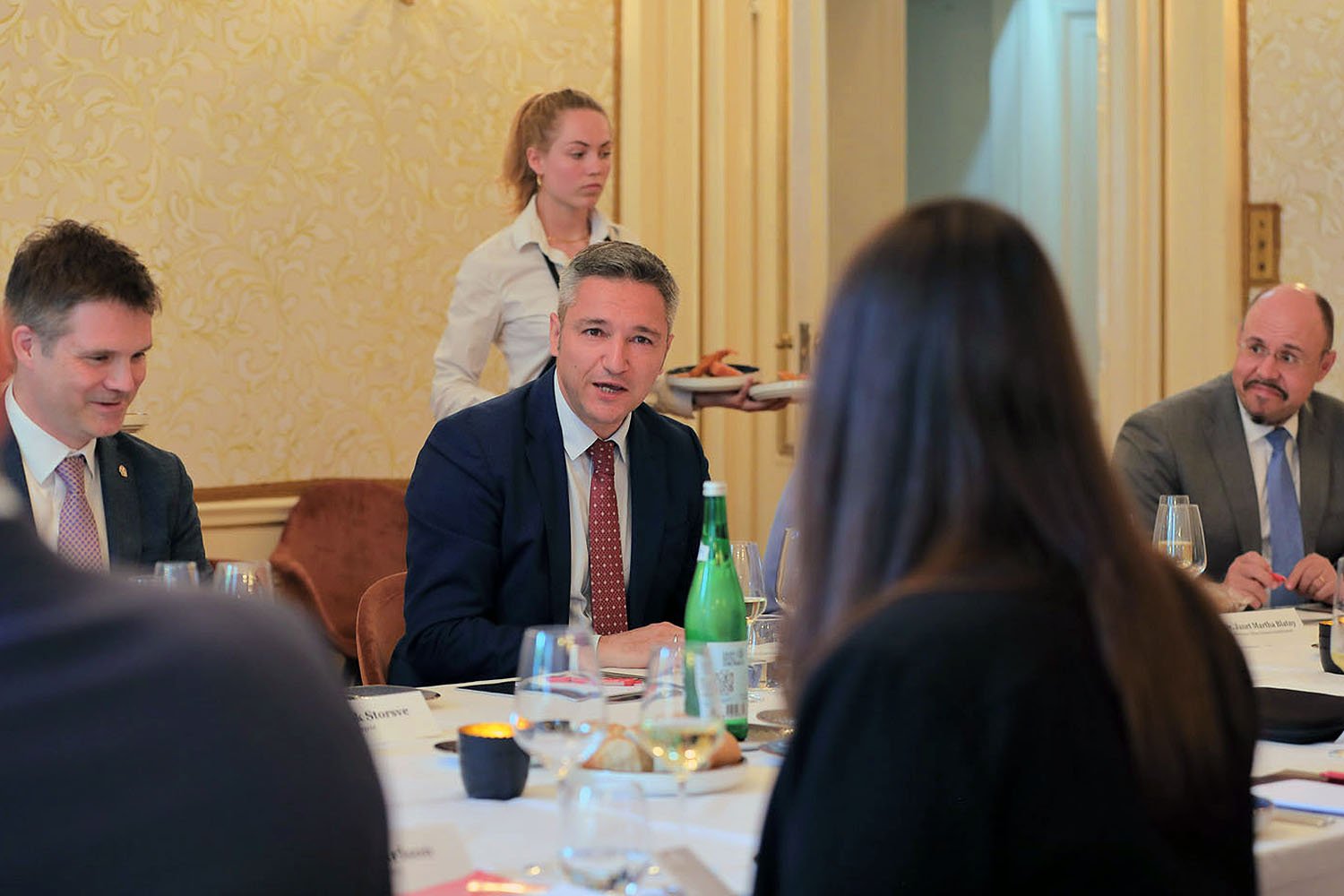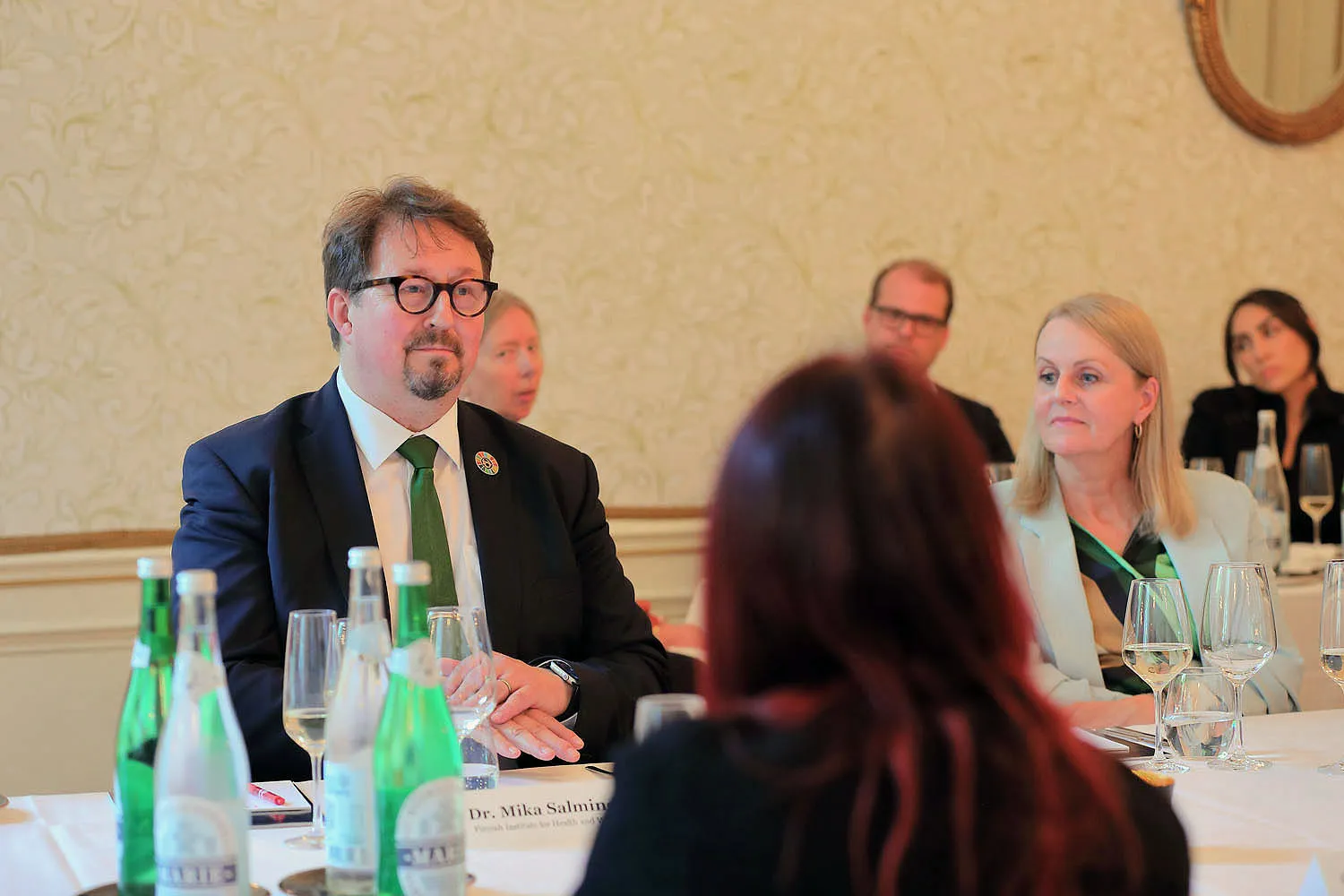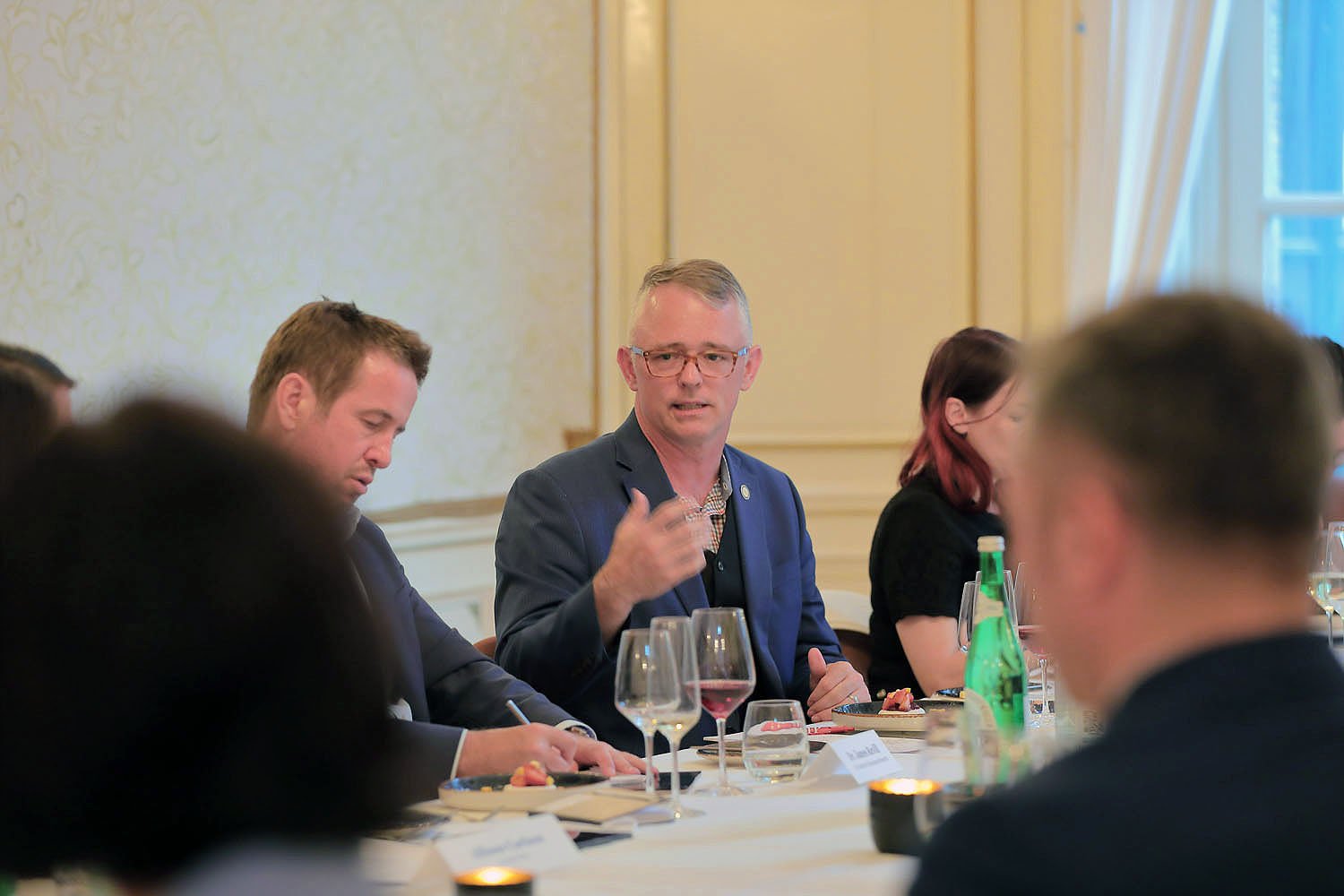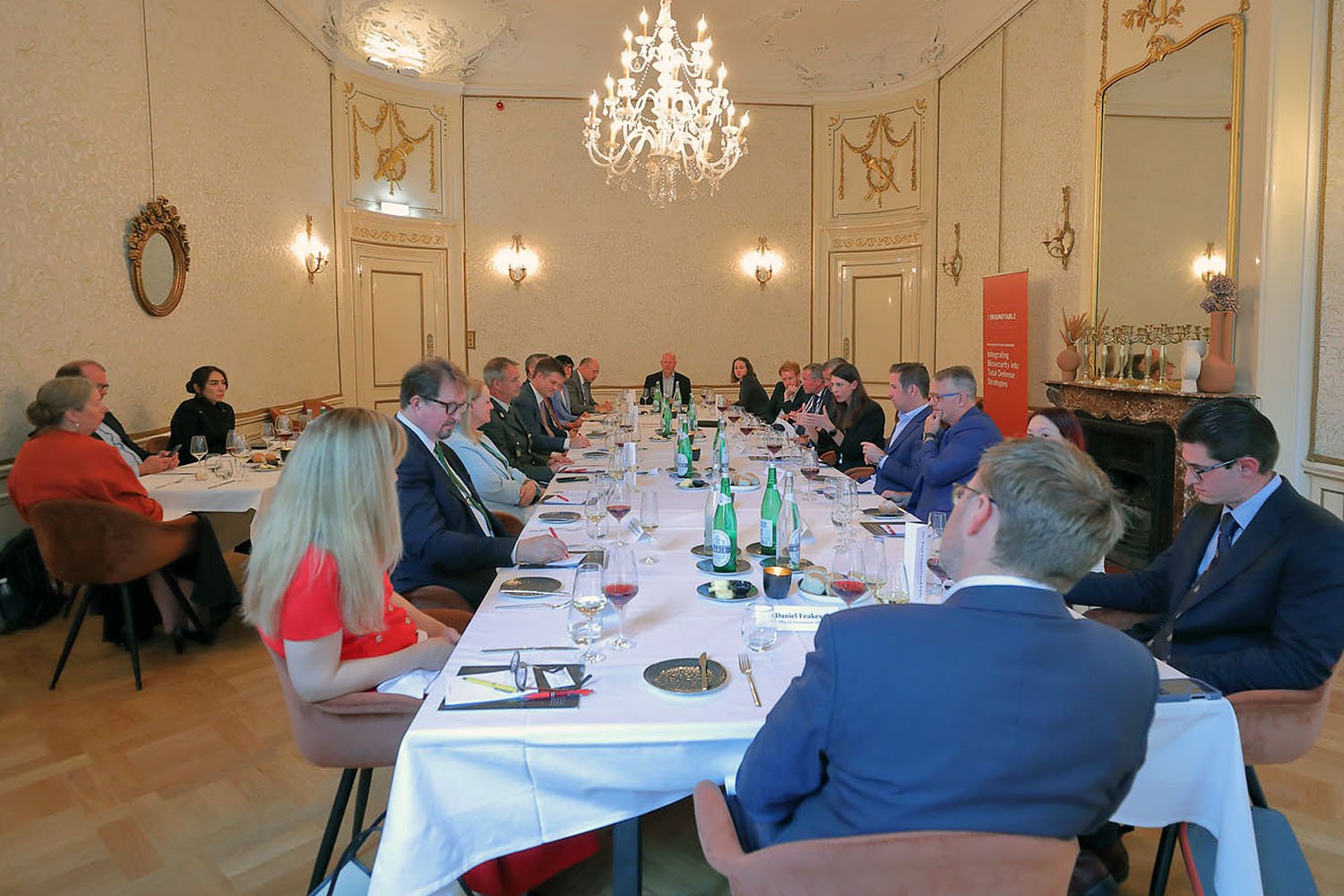Resilience Without Borders
Integrating biosecurity into total defense strategies
A synthesis report by FP Analytics with support from Emergent
In June 2025, NATO member states agreed to devote 5 percent of gross domestic product to defense by 2035, a recognition of the complex and ever-changing threat landscape faced by the alliance’s member states. An essential part of this threat picture is the need for biosecurity and resilience against bio-threats, both natural and manmade. The shadow of the COVID-19 pandemic serves as a stark reminder of the potential society-wide impacts of disease, while acute threats remain from state and non-state actors capable of weaponizing pathogens for malign purposes. Potential threat vectors are likewise multiplying due to the advent of AI, synthetic biology, and other emerging technologies. A safer, more robust alliance is therefore dependent on continued and enhanced biosecurity, encompassing not just the narrow military tools for responding to bio-threats but a rich ecosystem of military, civil, and private sector resources.
On the sidelines of the June 2025 NATO Summit in The Hague, Foreign Policy, in partnership with Emergent, held a high-level roundtable with military, policy, industry, and academic stakeholders to examine biosecurity risks—and opportunities—facing the NATO alliance. The conversation focused largely on the measures, practices, and investments member states need to pursue to enhance biosecurity resilience and preparedness, including through integrated concepts for defense such as “total defense.” Attendees highlighted a number of key issue areas, particularly the need for greater awareness of biosecurity threats, enhanced preparedness between and across the military and civil domains, improved information sharing and monitoring, responsive regulation, and continued efforts to combat disinformation. The discussion occurred under Chatham House rules, with key takeaways highlighted below.
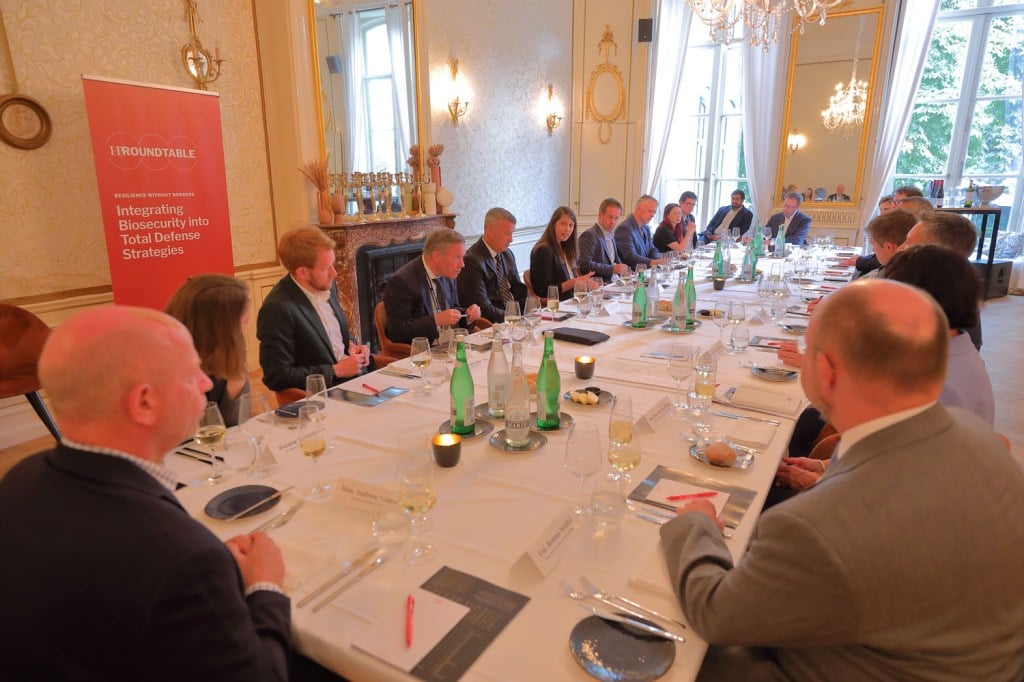
Key Takeaways
Threats to biosecurity are complex, multifaceted, and continuously evolving.
Biosecurity is a key part of NATO’s core defense mission, entailing both the need to protect warfighters and safeguarding civilians in their day-to-day lives. The biosecurity mission, however, is constantly changing, and efforts to prepare and make society more resilient to these risks requires an ever-vigilant awareness of bio-threats as they evolve. Participants highlighted a diverse mix of threat vectors, from animal-borne diseases to pathogens released by malign actors, to disruptions to medical supply chains. State actors remain a point of concern, particularly China, Russia, North Korea, and Iran in the context of a potential great power conflict. Likewise, there is a persistent risk of the proliferation of bioweapons to non-state actors with which states like Russia and North Korea partner. Other factors such as unclear attribution and weaponized disinformation combine to give malign actors an arsenal of options that would render a bioweapon attack hugely disruptive. While an attack may be immediately devastating, its origins could remain obscured for weeks, months, or years, hindering effective response and attribution efforts.
While speakers repeatedly alluded to the risks stemming from AI, which can enable malign actors to develop novel pathogens or identify effective vectors for an attack, they also spoke to the complexity of a threat spectrum that encompasses bio-threats new and old. The risk may not just come from a new, lab-grown disease variant developed with the assistance of AI, but also the delivery of known pathogens such as anthrax or plague through new and unexpected means, such as repurposed agricultural sprayer drones. The relatively low cost of these platforms and the proliferation of potential attack vectors necessitates enhanced biosecurity measures across the board, improved monitoring and cooperation regarding bio-threats, and forward thinking about how to address challenges like dual-use goods across the alliance. NATO’s new 5 percent target, which includes 1.5 percent for infrastructure, civil preparedness, and resilience, among other defense-related targets, could therefore be leveraged to address these proliferating biosecurity threats as a part of comprehensive approach to European defense.
Effective biosecurity requires whole-of-society preparedness and resilience, particularly involving the public health sector and other non-military government entities.
Given the diverse and fluctuating nature of bio-threats, countries must engage in preparation, resilience, and response measures that are equally flexible and that harness a society’s full spectrum of resources. While the military is traditionally thought of as the primary response mechanism to a biological attack or outbreak, the health sector and others are almost certain to play a critical role in facing any pathogenic threat, particularly if an attack or disease outbreak targets civilians or threatens to. The ministry of health may drive the treatment of impacted persons, ensuring care for infected individuals or helping to locate therapeutics for novel diseases, as in the COVID-19 pandemic. Despite this critical input, discussion participants lamented that health ministries almost always play an ancillary role in biosecurity discussions instead of being considered as part of the core defense mission. Other ministries may similarly play important roles, such as interior ministries managing domestic response efforts or ministries of the environment helping to manage water-borne illness or other climate-related threats.
The diverse—and potentially catastrophic—risks posed by biothreats require mindful planning and the ability to deploy the full gambit of public and private tools in response. The potential reconceptualization of defense following the 2025 summit to include civil infrastructure and other “security-related spending” points to the potential to invest not just in the hard-security capabilities in the years ahead but also in the frameworks, resources, and personnel needed to integrate biosecurity as a core strength of NATO’s multi-layered approach to security. Speakers highlighted Norway’s “total defense” system as a potential model, which seeks to mobilize “the sum of the country’s civilian and military resources, which work together to prevent and manage crises, armed conflicts and war.” As one speaker noted, a bioweapons attack or disease outbreak is not responsibility of any single entity, “It’s the entire government. It’s all the ministries.”
Smart regulation underlies successful responses to bio-threats but is increasingly challenging.
A rigorous, up-to-date regulatory landscape was highlighted as a critical avenue for managing biosecurity threats, but there are significant risks from both over- and under-regulation. Participants noted that biological materials, given their multivarious uses and applications, cannot be regulated in the same black-and-white way as chemical, radiological, or nuclear material. If regulations are too stringent—or needlessly inflexible—they could stymie a government’s response to a disease outbreak, delaying efforts to develop and roll out products such as vaccines. Similarly, rules that deter cross-border movement of biological materials might deter research, medical, or commercial endeavors. Conversely, the extant rules governing biological materials today are largely insufficient, making it far easier, for example, to transport human pathogens across European borders than agricultural goods. This makes it surprisingly easy for non-state actors to gain access to materials that could be used in a bioweapons attack. Several participants advocated for greater forethought across Europe regarding regulations to aid the smooth deployment of countermeasures in the event of a bio-crisis—creating a system stringent enough to put human safety first but flexible enough to meet sudden and unexpected needs.
Several areas were mentioned as in need of reform or future development. Dual-use goods—items with potential civilian and military applications—pose a vexing problem because, while designed for beneficial or innocuous purposes, they could be harnessed by malign actors , such as agricultural sprayer drones. The rate of technological innovation poses an additional obstacle in that new products are often on the market before regulations are in place or hazardous applications are fully understood. Several participants spoke to the need for greater regulation of AI given its potential to aid nefarious actors in rapidly developing new biological weapons. While broad regulation of AI seems unlikely at this juncture, there was palpable concern about the impact of AI on the field of biosecurity. As one speaker suggested, “not only state actors but also non-state actors may and will have the capability to develop bioweapons one way or another.”
Sharing resources, expertise, and information is critical to strengthening biosecurity, particularly when fiscal resources are limited.
In seeking to address the multifaceted, complex nature of bio-threats, NATO members will be well served to combine capabilities and leverage the advantages of all constituent members, extending the concept of layered defense to the biosecurity sphere. Layered defense is the idea of creating multiple, sequential lines of defense against a range of potential threat vectors. This kind of approach offers several potential benefits in the biosecurity realm, from maximizing the impact of limited resources to strengthening collaborative structures between alliance partners. This includes activities like sharing procurement of bio-countermeasures, collaboratively supporting and hardening bio-relevant supply chains, or reinforcing joint structures such as the Combined Joint CBRN Defence Task Force, which fields NATO experts to respond to chemical, biological, radiological, or nuclear threats.
Improved information sharing and bio-surveillance tools are one area where a well-integrated alliance with established biosecurity protocols can render the whole stronger than its parts. For example, clear lines of communication among partners can help to identify pathogenic threats early, before they cross borders, or help to rush scientific, medical, or biohazard expertise and response resources to need. The demand for integrated threat monitoring stretches beyond the narrow scope of human pathogens and should encompass animal-borne illnesses, requiring frameworks to integrate information from the agricultural and veterinary fields into the biothreat landscape. As one speaker noted, success in this area will also depend on shifting the focus from national outcomes to alliance-wide outcomes, imbuing a sense of shared purpose and mutual reliance among alliance members.
Safeguarding the information space is an essential component of contending with biothreats.
As illustrated by the COVID-19 pandemic, NATO and EU governments face a daunting challenge in seeking to successfully navigate the information space alongside any disease outbreak or bio-attack. As one speaker noted, even a poorly conducted attack could have disastrous consequences if paired with mis- or disinformation. There are rising levels of distrust between civilian populations and the government bodies and scientific communities that play central biosecurity and response roles. Barriers should be addressed not just between civilians and institutions, but also between policymakers and scientists, to ensure policy formulation remains evidence-based, inclusive, and forward-looking. As in other areas, challenges in the information domain are being amplified by AI, which can empower a malign actor to conduct information operations more efficiently or on an exponentially wider scale.
To address the public’s fragmenting trust in government and medical institutions, speakers highlighted the importance of frequent, transparent communication on the local, national, and alliance-wide levels. Official structures, like the Civil-Military Cooperation Centres of Excellence which exist in Germany, the Netherlands, Latvia, and elsewhere, can work as conduits for information sharing between government and non-government bodies. Greater understanding of biosecurity, and the planning needed to mitigate major risks, will also spread at the individual level, as people with knowledge speak to their friends, relatives, and communities. Participants highlighted civilian-participation models from northern European countries, such as Norway, where civilians receive training on biosecurity hazards and response as part of the “total defense” system. By contrast, one speaker from southern Europe lamented the lack of a similar level of knowledge or preparedness in their own country, sharing that, “in the south, I personally don’t even know where I should go if there is an attack.” This disparity speaks to the need for integrated, alliance-wide efforts to enhance biosecurity awareness, strengthening individual states but also the alliance as a whole.
Looking Ahead
March 2025 marked 50 years since the Biological Weapons Convention entered into force, but bio-threats—both manmade and naturally occurring—remain an indispensable and continuously changing part of the threat spectrum. Belligerent state actors and the proliferation of potential pathogenic threats, aided by AI and other emerging technologies, make the biosecurity landscape characteristically uncertain. Despite these challenges, participants struck a note of optimism regarding the future of biosecurity for NATO and Europe. Above all, the recent announcement of the 5 percent spending target—with 1.5 percent reserved for defense-related priorities—offers significant opportunity to better integrate biosecurity into NATO’s layered defense concept and generate the resources needed for enhanced health infrastructure, resilient supply chains, and critical monitoring and diagnostic tools, among other needs. The EU Biotech Act, now under discussion, may likewise serve as a driver of new investment and commitment to biosecurity as the bloc seeks to accommodate innovation, commerce, and safety in the biotech space. What is certain is that comprehensively meeting the bio-threats of the future will require enhanced cooperation among states, government sectors, and public and private stakeholders alike. Speaking to the significant risk inherent to bio-threats, one speaker offered a cautionary warning: “Countries lose wars, not because they’re weak on the battlefield, but because the population is vulnerable.”

This synthesis report from FP Analytics, the independent research division of The FP Group, was produced with support from Emergent Biosolutions. FP Analytics retained control of the findings of this synthesis report. Foreign Policy‘s editorial team was not involved in the creation of this content.

